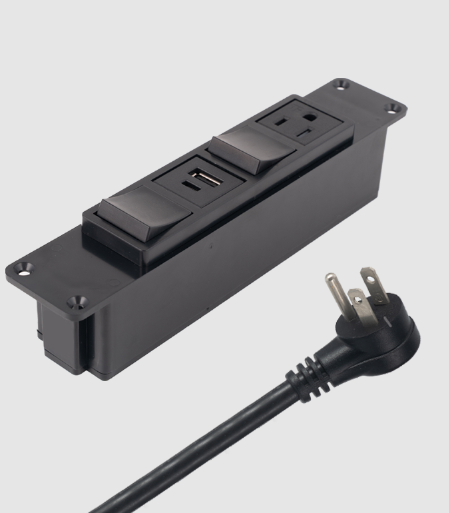
Date:2024-09-04 17:37:22
Vists:
The problem of slow charging of USB sockets may be caused by various factors. Here are some common solutions aimed at helping you improve charging efficiency:
1. Check and replace the USB cable and charger
Cable inspection: Firstly, check for any signs of damage to the USB cable, such as bending, breakage, or looseness. Damaged cables can affect current transmission and slow down charging speed. If a problem is found, please replace it with a reliable quality USB cable.
Charger inspection: Similarly, check if the charger is damaged or aged. If the charger has insufficient power or malfunctions, it can also affect the charging speed. Suggest replacing with original or high-power charger.

2. Confirm the USB port type and power
Port type: Different USB ports (such as USB 2.0, USB 3.0, USB-C, etc.) support different data transfer speeds and charging power. USB 3.0 and USB-C typically have higher charging efficiency. If possible, try connecting the device to a higher power USB port.
Port power: The USB port of some devices may limit the charging power. For example, some USB ports on a computer may not have as much power as specialized charging heads. Using specialized charging heads or power adapters that support fast charging typically results in faster charging speeds.
3. Check the device software and battery condition
Software update: Ensure that your device software is the latest version. Sometimes, software updates may include performance improvements, including an increase in charging speed.
Battery condition: Aging or damage to the battery may also cause a slower charging speed. If the device battery has been used for a long time and the charging speed has significantly decreased, it may be necessary to consider replacing the battery.
4. Control the charging environment
Temperature control: Extreme temperatures (too high or too low) can affect charging speed. Ensure that the charging environment is within a suitable temperature range (such as 16-25 degrees Celsius) to avoid affecting charging efficiency.
5. Use high-quality USB sockets and sockets
Socket selection: Choose a reputable brand and reliable quality USB socket and plug. These products typically have better electrical performance and safety, providing more stable charging current and voltage.
By using the above methods, you can effectively solve the problem of slow charging of USB sockets. If the problem persists, it is recommended to contact the equipment manufacturer or professional maintenance personnel for further inspection and repair.
